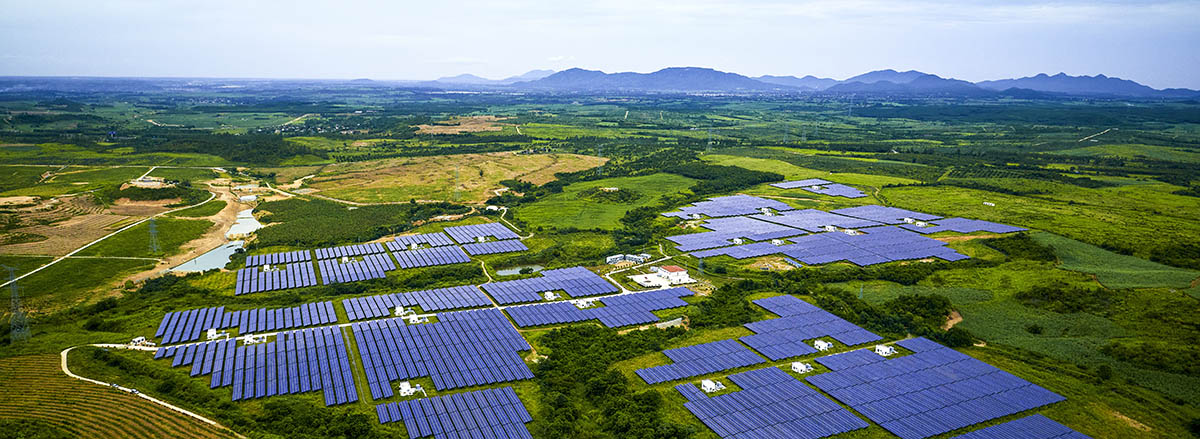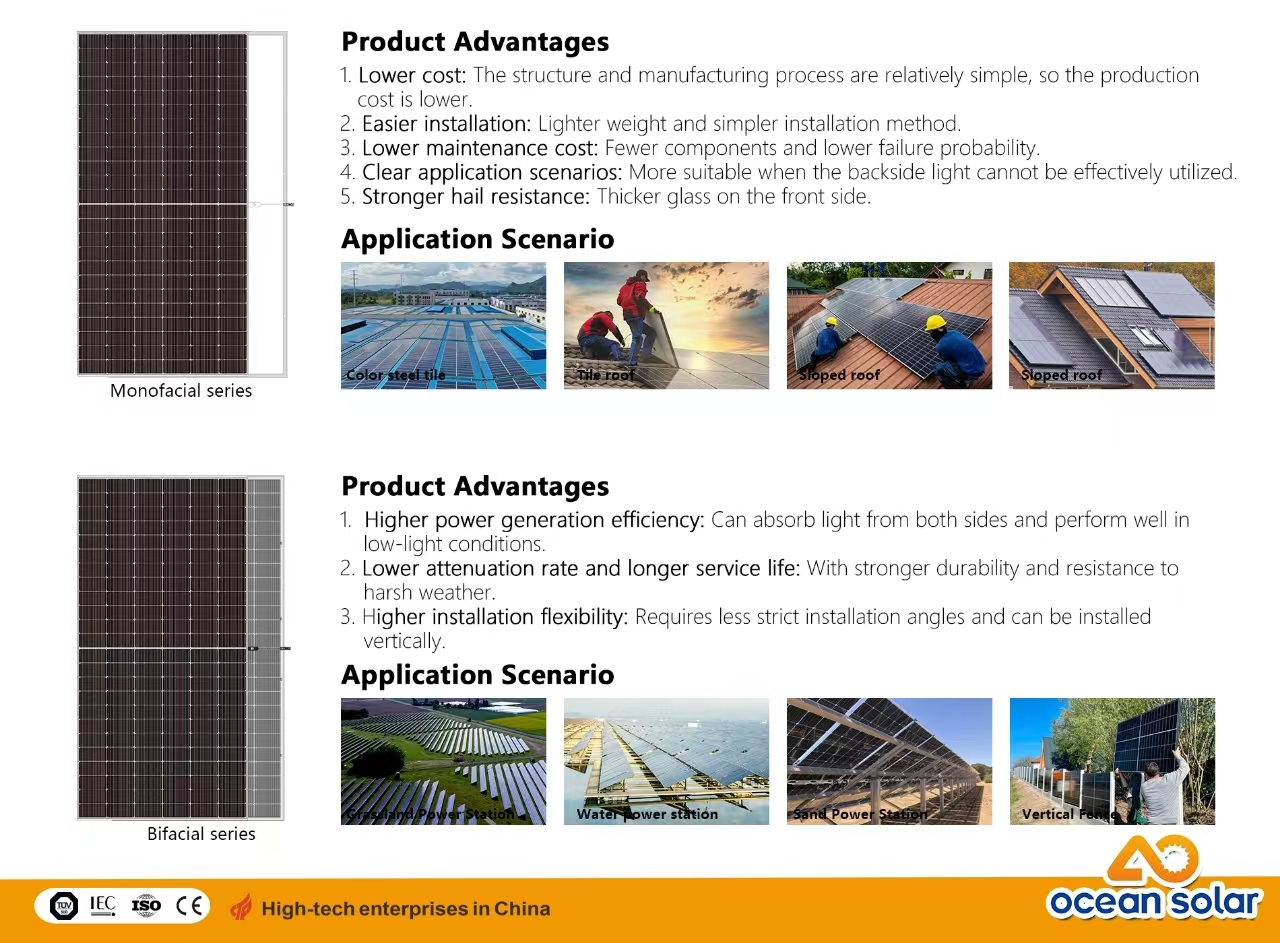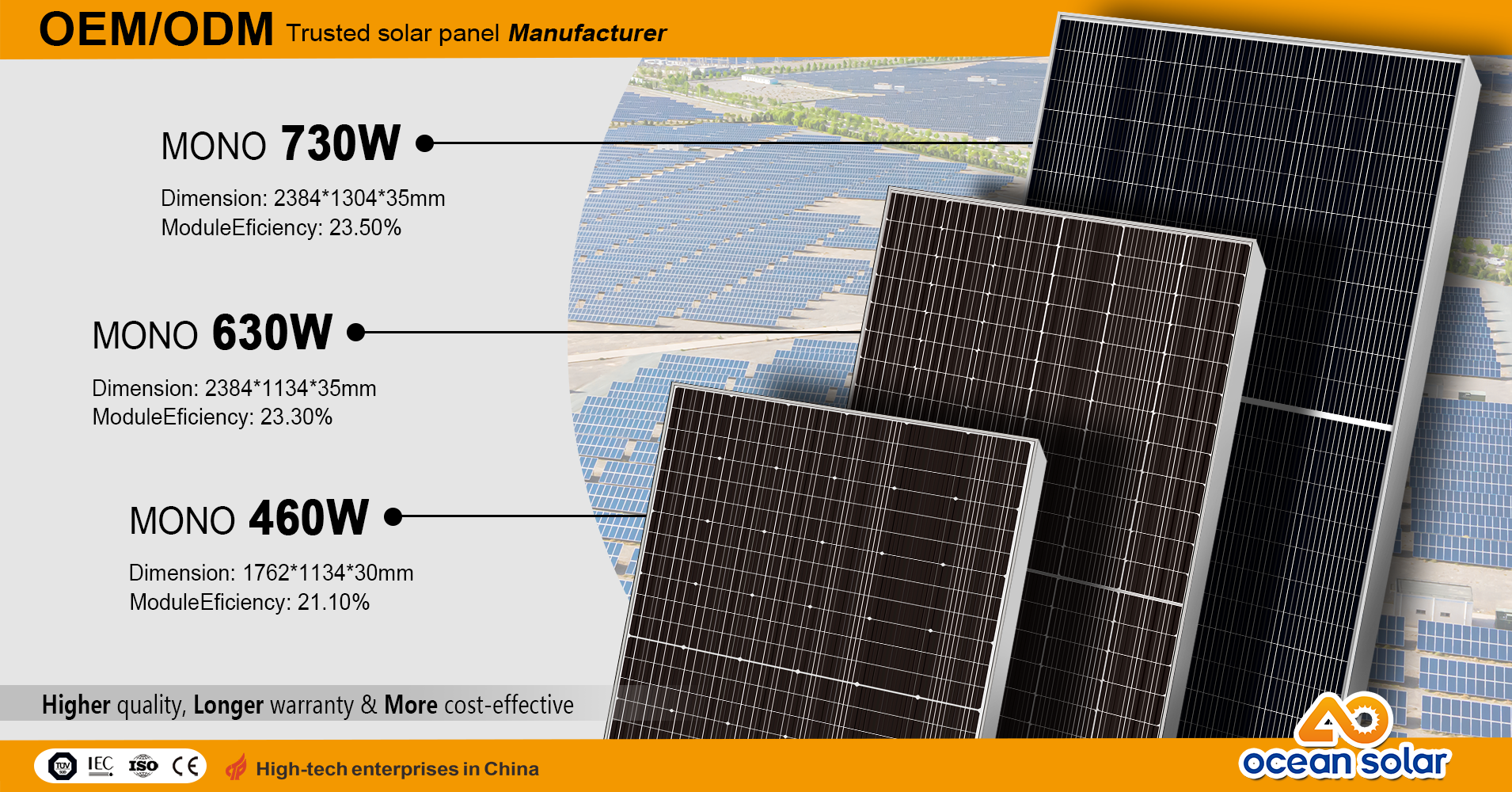As solar energy becomes more integrated into everyday life, choosing the right solar panel is a critical decision. This article will analyze the differences between monofacial and bifacial panels, focusing on their applications, installation, and costs to help you make an informed choice.
1. Application scenarios of solar panels
Single-sided solar panels:
Ocean solar found that monofacial panels capture sunlight from one side, and they are ideal for residential roofs, where panels are installed at a fixed angle facing the sun, usually in a fitted style in various areas.
Color steel tile roof:
Single-sided panels are ideal for homes where panels are installed at a fixed angle to face the sun directly.
Sloped roof:
They are ideal for sloping roofs. It is more convenient to install in a style, and more beautiful at the same time.
Bifacial solar panels:
The double-glass solar panels produced by Ocean solar capture sunlight from both sides, improving the efficiency of solar panels and generating higher returns:
Reflective environment:
In areas with good reflection, the benefits of the product can be maximized, such as snow, water or sand.
Large solar farms:
Ground-mounted installations benefit from bifacial panels because they are optimized to allow sunlight to hit both sides.
Conclusion: For typical rooftops, monofacial panels work well. Bifacial panels are best suited for reflective or large open spaces.
2. Installation of solar panels
Monofacial solar panels:
Easy to install:
Easily install on rooftops or flat surfaces because they weigh less than bifacial panels.
Mounting flexibility:
Monofacial solar panels can be installed in a variety of locations without having to specifically aim for sunlight on the back.
Bifacial solar panels:
Detailed installation:
Requires correct positioning to capture sunlight on both sides, resulting in higher returns.
Mounting space requirements:
Best suited for reflective ground or high-clearance installations, requiring more space for installation.
Conclusion: Monofacial panels are easier to install, while bifacial panels require specialized positioning to maximize performance.
3. Cost of solar panels
Monofacial solar panels:
Lower manufacturing costs:
Monofacial solar panels take longer to produce and benefit from economies of scale, which lowers their price. Ocean Solar introduces 460W/580W/630W solar panel systems that are suitable for home use.
Cost-effective:
Single-sided solar panels are an affordable option for individuals or businesses looking for a low-cost solution.
Bifacial solar panels:
Higher initial cost:
Bifacial panels are more complex to manufacture and therefore more expensive than single-sided panels. Ocean solar production line upgrade! Introducing 630W double-glass solar panels, priced much lower than general double-glass solar panels.
Potential long-term savings:
In environments optimized for bifacial technology (such as highly reflective areas), these panels can produce more energy, which may offset the higher initial cost over time.
Conclusion: Single-sided panels are more affordable upfront. Bifacial panels cost more, but can provide long-term savings under the right conditions.
Final Thoughts
Ocean solar finds single-sided solar panels to be cost-effective and easy to install, suitable for most residential projects. Bifacial panels, while more expensive and complex to install, can provide higher efficiency in environments with reflective surfaces or large-scale operations.
Ocean Solar recommends choosing the right solar panels, and you can further consider your location, budget, and energy goals.

Post time: Sep-19-2024



